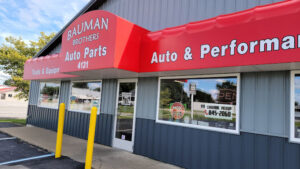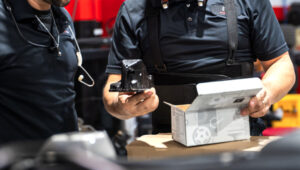The trend should have stimulated a rapid service bay expansion, but instead thousands of bays decreased
Fort Wayne, Ind.—Car and light truck DIFM product and labor (purchased service) volume has grown significantly over the past five years. This should have stimulated a rapid service bay expansion, but instead, thousands of bays decreased. Despite this decrease, the remaining bays have kept pace with the rapidly expanding DIFM market, according the latest Lang Aftermarket iReport.
The average bay’s yearly repair volume has climbed much faster than total DIFM product and service sales, with annual sales per bay (products and labor) surging by over 20% between 2018 and 2023.
The following are highlights from Lang’s analysis.
Expanding DIFM Product Sales
Despite the impact of COVID-19, which reduced car and light truck DIFM product volume by double-digits during 2020, Do-It-For-Me (DIFM) products and labor (purchased service) rose between 2018 and 2023, as the declining number of service bays across the U.S. turned out more work than ever before.
41,000 Service Bays Disappear
At mid-year 2023, there were approximately 41,000 fewer light vehicle service bays than five years earlier. The final analysis of the 2023 bay population by type of repair outlet will be available in approximately four months.
The service bay count in the U.S. decreased by nearly 4% between 2018 and 2023, while the VIO (vehicles in operation) increased by over 4% and DIFM sales topped 15% growth at user-price.
Soaring Vehicles Per Bay
The number of cars and light trucks per service bay in the U.S. continues to climb, resulting from the falling bay population and the increasing VIO.
The growing VIO and expanding DIFM sales should have triggered an increase in the nation’s bay population. However, the opposite occurred, and tens of thousands of service bays closed despite the increasing VIO and the DIFM market.
At mid-year 2023, the number of vehicles per bay was nearly 10% higher than five years earlier. This trend of more vehicles per bay in the U.S. will continue with no end in sight.
Solution to the DIFM Challenge
The challenge of fewer bays accommodating increasing vehicle repair can only be met by making bays more productive. Over the past five years, the six major types of auto repair outlets have not equally contributed to increased service bay output.
Growing Service Bay Volume
The average bay’s annual product and labor sales rose by over 20% from 2018 to 2023, one-third faster than the growth rate of the total DIFM market. The pace of bay production growth differed by type of repair outlet. Not surprisingly, purchased service generated most of the surging sales per bay.
Growth by Type of Outlet
Among outlet groups expanding their DIFM market share, foreign specialists recorded the highest growth in annual product and labor volume per bay, which increased by more than 25% between 2018 and 2023. Repair specialists also achieved above-average sales growth per bay.
Increased Bay Product Activity
The growth in service bay production is testimony to the investments that outlets have made in technician training, tools and equipment, software, and other resources to increase output per bay.
The continued growth of DIFM volume required by the declining number of service bays will make it increasingly necessary for outlets to invest in technician training, tools, equipment and management software to meet the growing DIFM market challenges.
Great Opportunities for Productivity Providers
Repair outlets must increase their productivity, given the shrinking number of bays and the growing repair market. This spells opportunities for companies that can develop and supply repair outlets with the means to increase their productivity.
The growth of electric vehicles on the road, while still modest in 2023, will provide the future impetus for more technician training, innovative tools and equipment, creative software and other resources to increase service bay productivity.
All of this underscores the competitive advantages that will accrue to repair outlets that can and will make these investments. The result will be shifts in the DIFM market share volume by size and type of repair outlets over the next five years.







Comments are closed.